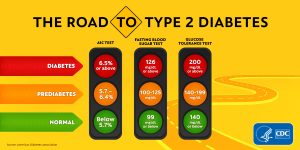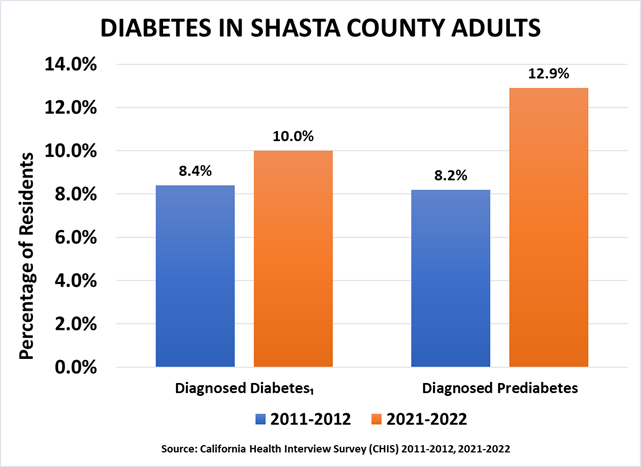Professionals
A message from Dr. T Nanda Kumar, Certified Medical Director-Vibra Hospital in Redding, California.
Prevent Diabetes
In the average primary care practice, it’s likely that one-third of patients over age 18 have prediabetes and are at risk for developing type 2 diabetes. Prediabetes is characterized by blood glucose levels that are higher than normal, but not yet high enough to be diagnosed as diabetes.
Unless treated early, many people with prediabetes will develop diabetes within 5 years. Diabetes is the leading cause of heart disease, stroke, blindness, kidney disease, and nerve disease. Prediabetes can be reversed if discovered and treated early.
Diabetes In Shasta County
Prediabetes is common in Shasta County, and most cases go undiagnosed. Prediabetes leads to diabetes and both have increased in Shasta County. Diabetes can increase your risk for dementia, especially when diagnosed at a younger age. It is estimated that 1 in 42 Shasta County residents are living with Alzheimer’s disease or a related dementia. Diagnosed diabetes in Shasta County adults has increased over the past decade from 8.4% to 10% and diagnosed prediabetes increased from 8.2% to 12.9%.

Be Their Helping Hand
Patients look to you, their health care provider, for information on promoting health and preventing chronic disease. Research shows that patients are more likely to engage in preventive health behaviors when they are recommended by their health care professionals.
Encouraging your patients to attend health education workshops or classes such as those offered at Shasta Community Health Center will help reduce their chances of developing type 2 diabetes and provide them tools for living happier and healthier lives. For more information about local workshops or classes, click on the link below.
So What Can I do?
 Screen and identify patients for prediabetes.
Screen and identify patients for prediabetes.- Refer patients to diabetes prevention programs or local health education workshops and classes such as those offered at Shasta Community Health Center. See below.
- Create feedback loops, linking the patient’s progress in the diabetes prevention program or workshop back to the practice.
You can be the link between your patients and the opportunity for them to start making simple lifestyle changes to stop diabetes before it starts.
Click on the link below for more information about local health education workshops or classes. There are no eligibility requirements for these workshops or classes.
Who is eligible for referral to a diabetes prevention program?

- Be 18 years or older.
- Overweight (BMI ≥25; ≥22 if Asian), and
- Diagnosed with prediabetes via one of three blood tests:
- Hemoglobin A1C: 5.7%- 6.4%
- Fasting plasma glucose (FPG): 100-125 mg/dL
- 2-hour plasma glucose (OGTT) between 140-199 mg/dL
- Previous diagnoses of gestational diabetes
- Have no previous diagnosis of type 1 or type 2 diabetes
AMA-Tools For The Team
DIABETES PREVENTION TOOLKIT
The American Medical Association (AMA) provides fact sheets, questionnaires and handouts that provide guidance on engaging health care teams and stakeholders on diabetes prevention topics, from testing and screening, to referrals and implementation of the National Diabetes Prevention Program (NDPP).
Further Resources from CDC and AMA
As part of the National Diabetes Prevention Program (NDPP), the American Medical Association (AMA) and the Centers for Disease Control (CDC) are collaborating to create tools and resources for care teams. The tools and resources identify patients with prediabetes and refer eligible patients to in-person or online diabetes prevention programs. These programs are one of the most effective ways to help physicians prevent or delay type 2 diabetes in high-risk patients.
- Preventing Type 2 Diabetes-CDC and AMA
- Diabetes Prevention Program-Benefits to your Practice-CDC
- Materials to Engage and Recruit Patients-CDC
- Information for Health Care Professionals-CDC
- Resources for your Practice-CDC
- Testimonials from Healthcare Professionals
- Prevent Diabetes Stat Toolkit
- Healthy Brain Initiative



